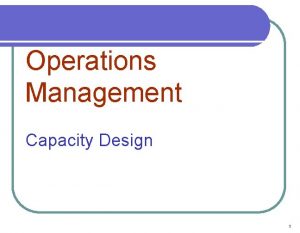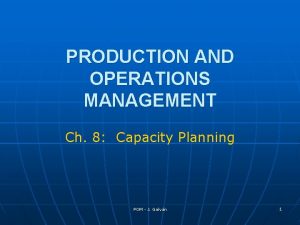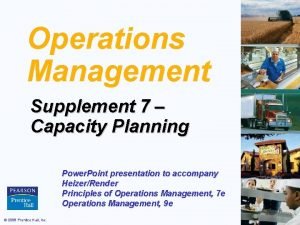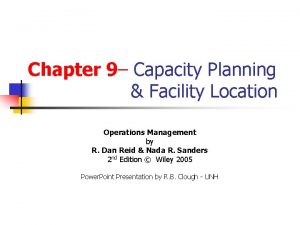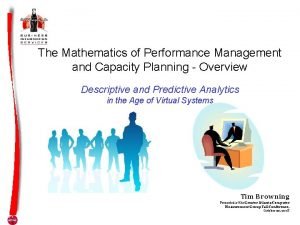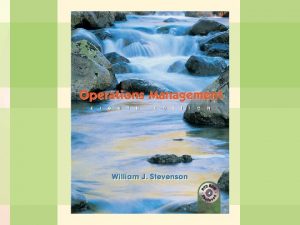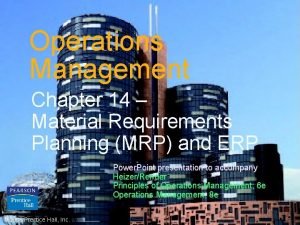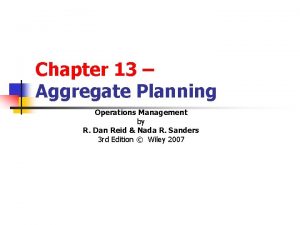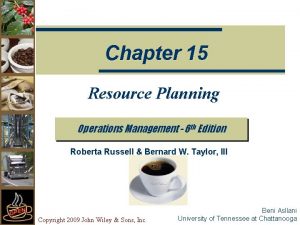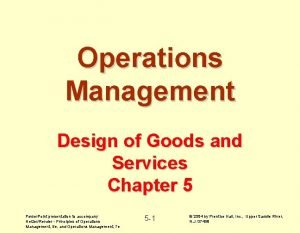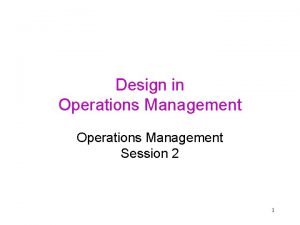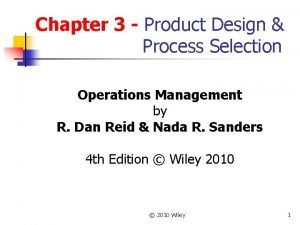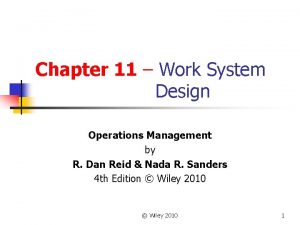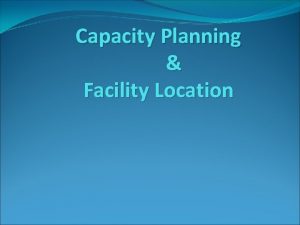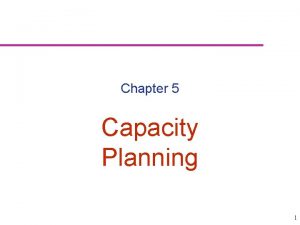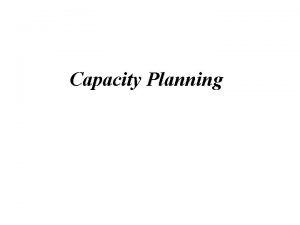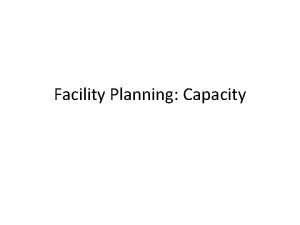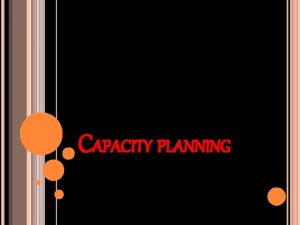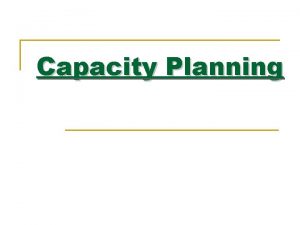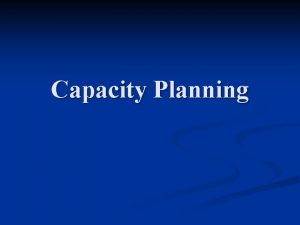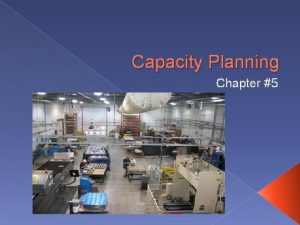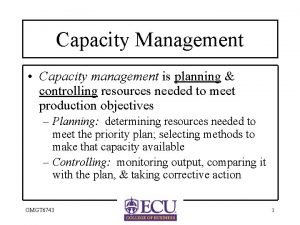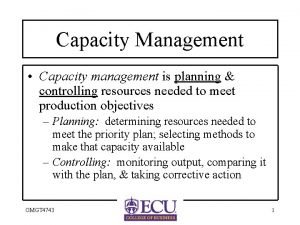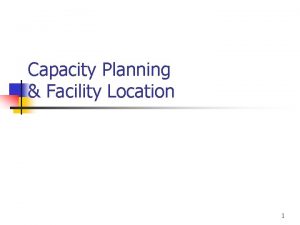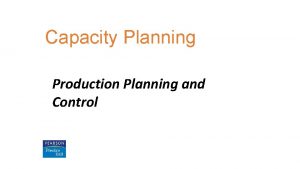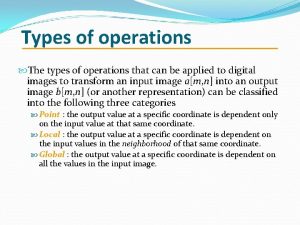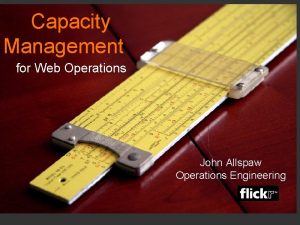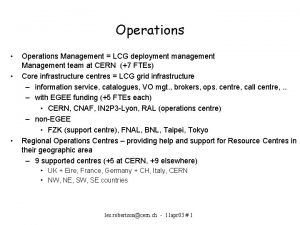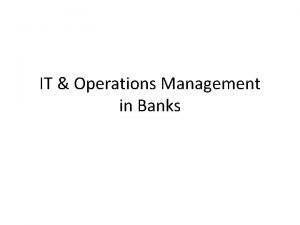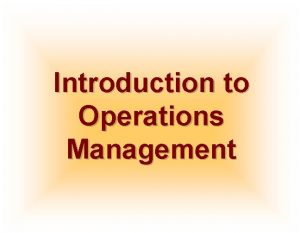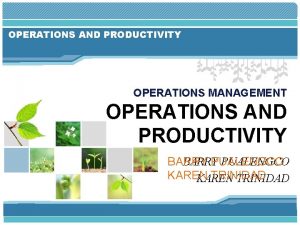Operations Management Capacity Design 1 Types of Planning

















![If the fixed costs are 3500, l BEPrs. = FC ∑[(1 -Vi/Pi)*(Wi)] l 3500*12 If the fixed costs are 3500, l BEPrs. = FC ∑[(1 -Vi/Pi)*(Wi)] l 3500*12](https://slidetodoc.com/presentation_image/317d4f45ee51172e51277a8d70827d26/image-18.jpg)



- Slides: 21

Operations Management Capacity Design 1

Types of Planning Over a Time Horizon Long Range Planning Intermediate Range Planning Short Range Planning Add Facilities Sub-Contract Add Equipment Add Shifts Add Personnel Build or Use Inventory Schedule Jobs Schedule Personnel Allocate Machinery Modify Capacity Use Capacity 2

Definition and Measures of Capacity Design Capacity: The maximum “throughput, ” or number of units a facility can produce in a period of time. Effective capacity: Capacity a firm can expect to achieve given its product mix, methods of scheduling, maintenance, and standards of quality. Utilization : Efficiency : Actual output as a percent of design capacity. Actual output as a percent of effective capacity. 3

Utilization Measure of planned or actual capacity usage of a facility, work center, or machine Utilization = Actual Output Design Capacity 4

Efficiency Measure of how well a facility or machine is performing when used Actual output Efficiency = Effective Capacity 5

Example Facility produces breakfast rolls l Last week, produced 148, 000 rolls l Effective capacity is 175, 000 rolls l Line operates 7 days a week with three 8 hour shifts per day l Line designed to produce 1200 rolls per hour l Determine l l l Design Capacity Utilization Efficiency 6

Calculating actual output Same facility adding one more line due to increase in demand for deluxe rolls l Effective capacity is 175, 000 rolls of this line l Efficiency of this second line will be 75% l What is the expected output? 7

Managing Demand l Demand exceeds capacity – curtail demand by raising prices, scheduling long lead times, etc l Capacity exceeds demand – stimulate demand through price reductions, aggressive marketing, etc l Adjusting to seasonal demands – offer products with complementary demand patterns – pdts for which demand is high for one when low for the other 8

Managing Capacity Making staffing changes (increasing or decreasing the number of employees) 2. Adjusting equipment and processes – which might include purchasing additional machinery or selling or leasing out existing equipment 3. Improving methods to increase throughput; and/or 4. Redesigning the product to facilitate more throughput 1. 9

Breakeven Analysis l Technique for evaluating process & equipment alternatives l Objective: Find the point ($ or units) at which total cost equals total revenue l Assumptions l Revenue & costs are related linearly to volume l All information is known with certainty 10

Break-Even Analysis l Fixed costs: costs that continue even if no units are produced: depreciation, taxes, debt, mortgage payments, salaries, etc l Variable costs: costs that vary with the volume of units produced: labor wages, materials, portion of utilities 11

Breakeven Chart Cost in Dollars Total revenue line Profit Breakeven point Total cost = Total revenue Total cost line Variable cost Loss Fixed cost Volume (units/period) 12

Crossover Chart Process A: low volume, high variety Process B: Repetitive A Process C: High volume, s low variety s e oc t al t o s co r -P s. B t-P os tal c es roc To ess C c o r P cost Total T Fixed cost - Process C Fixed cost - Process B Fixed cost - Process A Process B Process C Lowest cost process 13

Break Even Contd. . l BEPx= FC (units) P-V BEPrs. = FC (amount) 1 -(V/P) BEPrs. = FC (multi product) ∑[(1 -Vi/Pi)*(Wi)] P=Selling price, V=variable cost FC=fixed cost

BEP Calc. l A company has fixed costs of 10000/- this period. Direct costs are 1. 5/- per unit and material cost is 0. 75/- per unit. The selling price is 4/- per unit. Calculate the BEPs.

BEP Calc. in multi product case ITEM PRICE COST Sandwic 2. 95 h 1. 25 FORECASTED SALES ANNUALLY 7000 Cola 0. 80 0. 30 7000 Burger 1. 55 0. 47 5000 Tea . 75 0. 25 5000 Salad 2. 85 1. 00 3000

Item P V V/P 1 -(V/P) Forec asted sales % of wghtd sales. contri bution sandwich 2. 95 1. 25. 42 . 58 20650. 446 . 259 Cola 0. 80. 30 . 38 . 62 5600 . 121 . 075 Burger 1. 55. 47 . 30 . 70 7750 . 167 . 117 Tea 0. 75. 25 . 33 . 67 3750 . 081 . 054 Salad 2. 85 1. 0 . 35 . 65 8550 . 185 . 120 46300 1. 00 . 625
![If the fixed costs are 3500 l BEPrs FC 1 ViPiWi l 350012 If the fixed costs are 3500, l BEPrs. = FC ∑[(1 -Vi/Pi)*(Wi)] l 3500*12](https://slidetodoc.com/presentation_image/317d4f45ee51172e51277a8d70827d26/image-18.jpg)
If the fixed costs are 3500, l BEPrs. = FC ∑[(1 -Vi/Pi)*(Wi)] l 3500*12 0. 625 = 67200

Decision trees application l l l A company is considering capacity expansion. it has 3 alternatives. the new facility would produce new type of product and currently the marketability of the product is unknown. Types of plant favorable mkt. unfavorable mkt. Large plant 100 k -90 k Medium plant 60 k -10 k Small plant 40 k -5 k The probability of fav and unfav. Markets are 0. 4 and 0. 6 respectively.

EMV (large plant)=0. 4(100 k)+(. 6)(-90 k)=14 k l EMV (medium plant)=0. 4(60 k)+(. 6)(10 k)=18 k l EMV (small plant)=0. 4(40 k)+(. 6)(-5 k)=13 k l l Based on Expected market value, the company should build a medium plant

Net Present value l A co. having two capacity expansion alternatives A and B have useful lives of 4 years. Initial outlay for A is 25 k and that for B is 26 k. The cost of capital is 8%. the cash flow pattern is as follows. year A B 1 10 k 9 k 2 9 k 9 k 3 8 k 9 k 4 7 k 9 k
 What is design capacity in operations management
What is design capacity in operations management System capacity definition in operations management
System capacity definition in operations management Leading demand with incremental expansion
Leading demand with incremental expansion Channel capacity planning
Channel capacity planning Aggregate planning is capacity planning for:
Aggregate planning is capacity planning for: Aggregate capacity planning
Aggregate capacity planning Examples of aggregate planning
Examples of aggregate planning Capacity utilization rate formula
Capacity utilization rate formula Dirty data
Dirty data Location planning and analysis in operations management
Location planning and analysis in operations management Product structure tree example
Product structure tree example A retailer must develop
A retailer must develop Aggregate planning strategies
Aggregate planning strategies Location planning management
Location planning management Resource planning in operations management
Resource planning in operations management Demand management and capacity management
Demand management and capacity management Design of goods and services in operations management
Design of goods and services in operations management Human resource and job design in operations management
Human resource and job design in operations management Long thin short fat operations management
Long thin short fat operations management Process selection in operations management
Process selection in operations management Process design in operations management
Process design in operations management Work system design
Work system design
